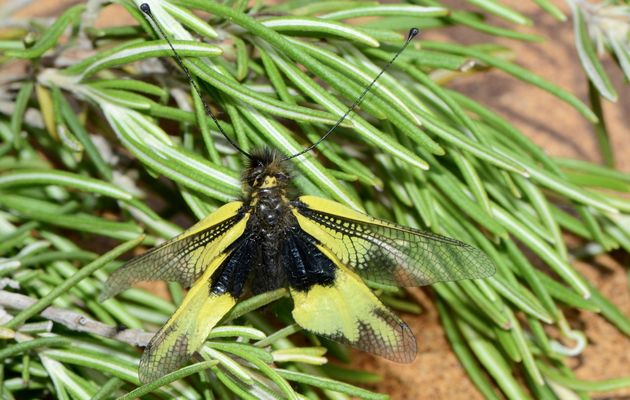When we accommodate our moral beliefs and choices to our personal preferences, we are almost always distorting the message of Jesus Christ.
 Libelloides cunii. Photo: Antonio Cruz
Libelloides cunii. Photo: Antonio Cruz
Dragonfly or butterfly? Well it is actually neither. The Libelloides cunii is an elegant insect, a member of the Neuroptera order, which looks like half dragonfly and half butterfly. It is an expert flyer, with two pairs of large wings, partially transparent and veined like those of the dragonfly, but also with yellow and black tinges like those of some butterflies’ wings.
You might spot it in spring or summer flying over some rosemary fields or sun-drenched meadows, where it captures other insects and feeds on them. It is, therefore, a predatory species.
This one, which I photographed last week in the Sant Llorenç de Munt massif (Barcelona), is a male.
It differs from the female of the species in having a more slender body and, especially, two small curved tails (cercoides) at the base of its abdomen, which serve to hold the female during copulation. The insect is only found in the northeast of the Iberian peninsula, and in the south of France.
The Libelloides cunii reminds me of the modern fashion of religious eclecticism: in other words, taking ideas from here there and everywhere to construct an à la carte religious worldview; adapting Christianity to one’s personal needs and inclinations; mixing some of the teachings of Jesus with those of Confucius, Buddha, Mohammed, Marx, or any other moral ideologue.
It is an à la mode faith which is broad enough to include people who do not even believe in God. In my view, the problem with such religious hybridisms is that they end up blurring the distinction between what is right and wrong. When we accommodate our moral beliefs and choices to our personal preferences, we are almost always distorting the message of Jesus Christ.

Las opiniones vertidas por nuestros colaboradores se realizan a nivel personal, pudiendo coincidir o no con la postura de la dirección de Protestante Digital.
Si quieres comentar o